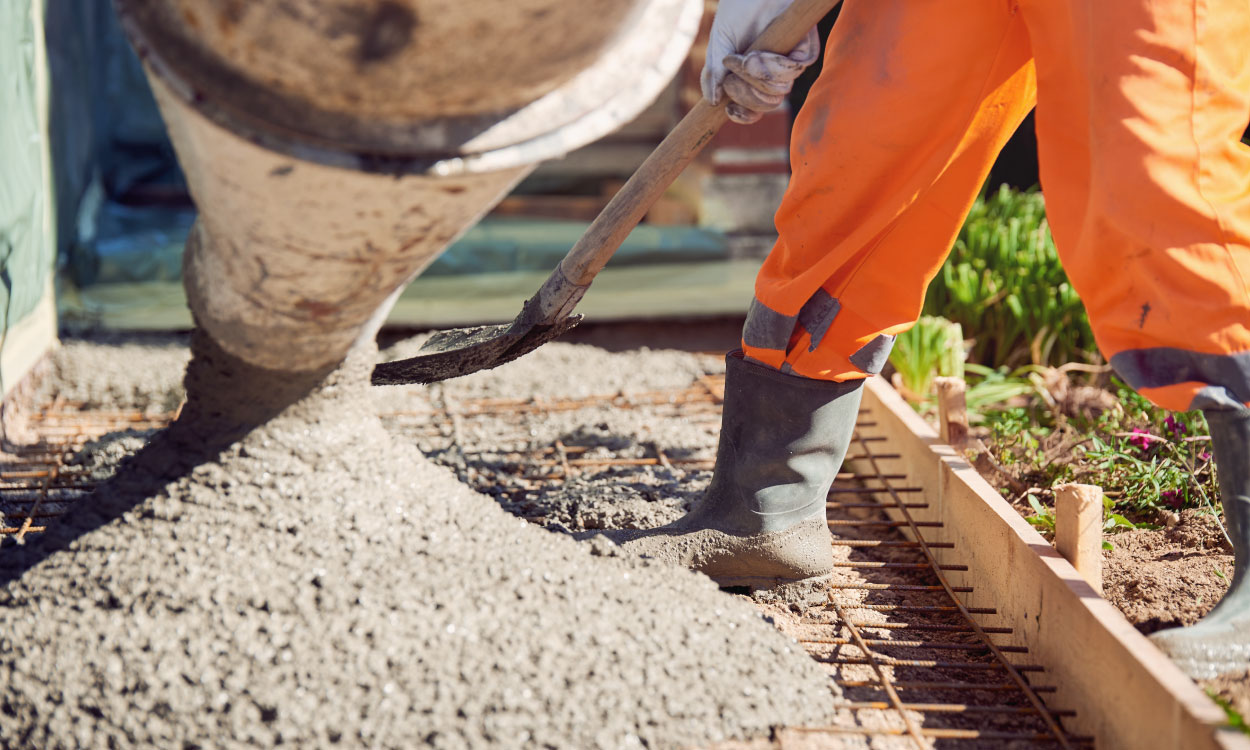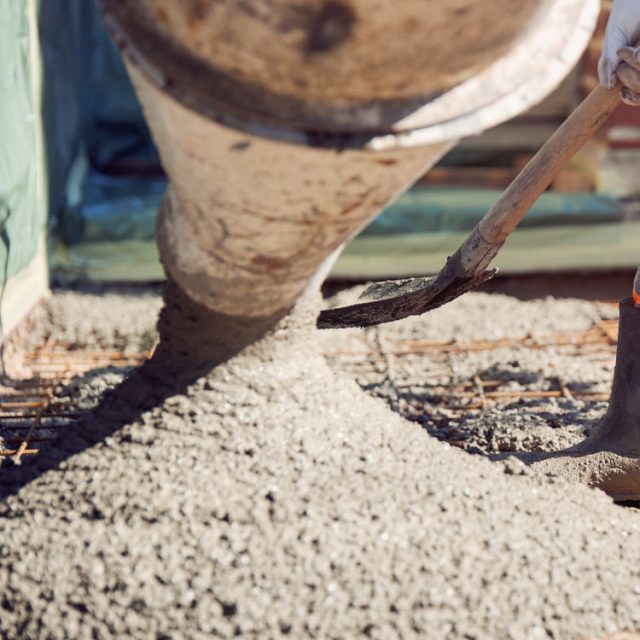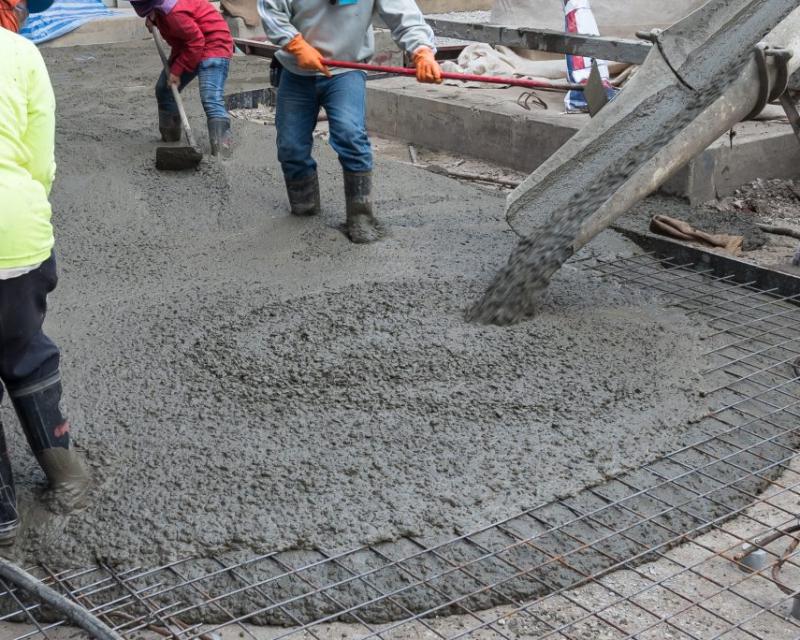How To Mix Concrete
Often, concrete is an essential building material that is required for any construction project.
Whether you’re doing some DIY at home or working as a professional builder or contractor in the construction industry and require a mix for a large-scale project, concrete is one thing that is almost always needed.
With this in mind, it’s important to understand how to properly handle concrete in order to ensure that it is being used most efficiently and, most importantly, to make sure that you achieve the results you are looking for.
One of the most important tasks when it comes to using concrete is the mixing process.
While concrete is often favoured due to its durability and strength, when not mixed well this robustness is likely to be negatively impacted. As well as this, incorrectly mixed concrete can cause problems with longevity, appearance and more.
With this in mind, this article we’ll outline how to mix concrete, demonstrating the various methods of doing so to ensure you can successfully carry out the task.
Read on to find out more.

How to choose the right concrete
Before you can mix concrete, you will first have to place an order.
As those who regularly handle concrete will be aware, there are a wide range of concrete options and products available and selecting the right type is important. With different mixes formulated to perform different jobs, choosing the right mix could be the difference between your mix being successful or not.
While we will explain how to mix concrete later in this article, we’re first going to highlight ready-mix concrete.
This is a popular concrete product that does not need to be mixed, as it arrives at your site ready to use as it has been mixed by the supplier or manufacturer prior to delivery.
However, if you do want to handle the mixing process yourself, there are a variety of concrete types to choose from.
This includes:
- On-site mixed concrete – A blend that needs to be mixed at your site once it has been delivered.
- Volumetric concrete – A concrete mix that is mixed by volume of material rather than weight.
- Rapid setting concrete – A product that sets quicker than conventional mixes and what is favoured when time is of the essence.
- Foamed concrete – A versatile option that is a great choice when voids or cavities need to be filled.
- Fibre reinforced concrete – Concrete that has been reinforced by durable fibres. This type of concrete is used when a mix needs to be even stronger than usual.
- Decorative concrete – A great mix if you need concrete to be aesthetically pleasing as well as robust.
- Self-compacting concrete – An innovative concrete product that compacts itself to produce a dense and extremely hard mix.
- Roll compacted concrete – A concrete mix that is roller compacted by bulldozers or road rollers to produce strong surfaces like roads.
- Waterproof concrete – Ideal for moist areas, waterproof concrete is impermeable and prevents water from gaining access to structures.
- Coloured concrete – Concrete that is available in a whole host of different colours when appearance is key. Usually, it’s used for patios, garages and more.
- Self-healing concrete – If used in high-traffic areas, damage and wear and tear are more likely. However, self-healing concrete repairs its own cracks to restore the area.
As well as the range of concrete products outlined above, you can also order mixes that have been specifically created to fulfil certain applications. For instance, you can get domestic concrete for foundations, shed bases and driveways or commercial concrete for building and construction purposes.
Furthermore, concrete can also be provided to you in varying grades and strengths depending on the project at hand, so it’s important to properly assess what mix you need before ordering and mixing.
At Concrete Supply UK, we regularly supply and deliver a whole host of mixes to our customers across the country. Our expert team are able to formulate products specifically to the unique needs of your project so you can rest assured you’ll always receive the most suitable mix in the appropriate quantities.
How to mix concrete
Now that we’ve discussed the different concrete mixes and types you can choose from, let’s look at how to mix concrete.
If you’ve chosen to mix the concrete yourself, then the next thing you’ll need to do is to decide whether you want to mix it by hand or by using a concrete mixer.
Both these methods can mix concrete effectively, but sometimes people prefer one or the other so it’s completely up to you.
No matter what option you go for, you’ll need:
- A spade or shovel
- A plastic bucket
- A facemask or mouth protector
- Safety goggles or eye protectors
- Safety gloves
How to mix concrete by hand
Let’s first take a look at how to mix concrete by hand. If you choose this method, you will need a mixing board, wheelbarrow or bucket to mix the concrete in.
Once you’ve selected your mixing container, follow the steps below:
- First, make sure that your mixing board, wheelbarrow or bucket has been cleaned. Remove any dirt or debris that may be present as this can impact the quality of the concrete if it gets into the mix. Once you have done this, open the concrete bag and tip the mix into the container.
- If you’re adding ballast (sand and gravel) to the mix, measure this out and add it to the mixing container. Manipulate it into a cone shape and combine the ingredients together.
- Now, it’s time to add the water. A common mistake is for people to add far too much water to the mix, resulting in a soup-like solution that is too thin to use. To prevent this from happening, pour a measured amount of water (the quantity will vary depending on the size of the concrete so be sure to check the bag’s instructions). Use a bucket for this rather than a hose as it is easier to control the amount of water being added. Wait for all the water to be absorbed before continuing to mix. Add the water slowly and not all at once, remember you can always add more in but cannot take any out.
- Use your spade or shovel to thoroughly mix the concrete. To do this effectively, you should continuously turn over the heap making sure the water coverage is throughout the mix. Continue to mix, alternating from one side of your mixture container to the other as this will ensure all dry particles in the concrete have been properly wetted. If the concrete is crumbly then it means it is too dry and if it is soupy then it is too wet. Add more concrete or water depending on what is required to strike the right balance.
- Once the concrete mix is just right, flatten it out with your shovel. Then, you can get on with pouring and the rest of your project.
How to mix concrete in a mixer
Now you understand how to mix concrete by hand, let’s take a look at using a mixer. Many people favour concrete mixers as they require less labour, but there are still a few things you need to understand about the process.
- First, make sure the mixer is safe and steady on firm, even ground. The last thing you want to happen is for the mixer to topple over during the mixing process and for the concrete to be ruined.
- Next, make sure the mixer is clean and ready to receive the mix. Just as we outlined earlier, any dirt or debris can damage the concrete’s quality so you need to make sure they have been removed. Then, switch the mixer on ensuring the drum is pointing at a 45-degree angle towards the sky. This will stop ingredients falling out. Once you start adding ingredients to the mixer, do not turn it off until the mixing process has come to an end. Stopping mixers with a concrete load in the drum can make it hard to turn back on.
- Measure half the sand and gravel you need for the mix and add it to the mixer. Do not put your hands in the drum as this can be dangerous while it’s rotating. Always pour ingredients into the mixer from above to keep yourself safe. Then, add a small amount of water to the mix and wait for a few minutes for it to all be mixed together.
- Next, you can add all of the concrete mix you are using. Then, add any remaining sand or gravel you may be using to the mix.
- Gradually add more water. Make sure you give it a chance to properly mix together before adding more as you do not want it to become too runny. A good mix is smooth and will not be dry or runny.
- Once you have a consistency that you are happy with, position a wheelbarrow under the mixer and tip the drum to empty the mix into it. Your concrete mix is then ready to pour and use.
If you’re wanting to avoid mixing concrete yourself, we’re here to help with our Readymix Concrete or On-site Mixed Concrete, that way you’ll just have to focus on pouring it and save yourself some time. To order, simply contact us today.


